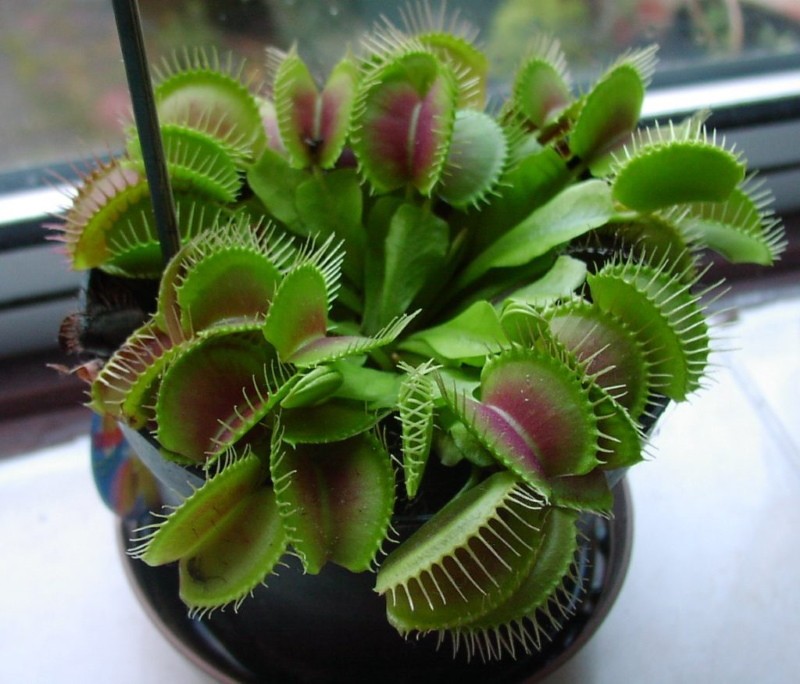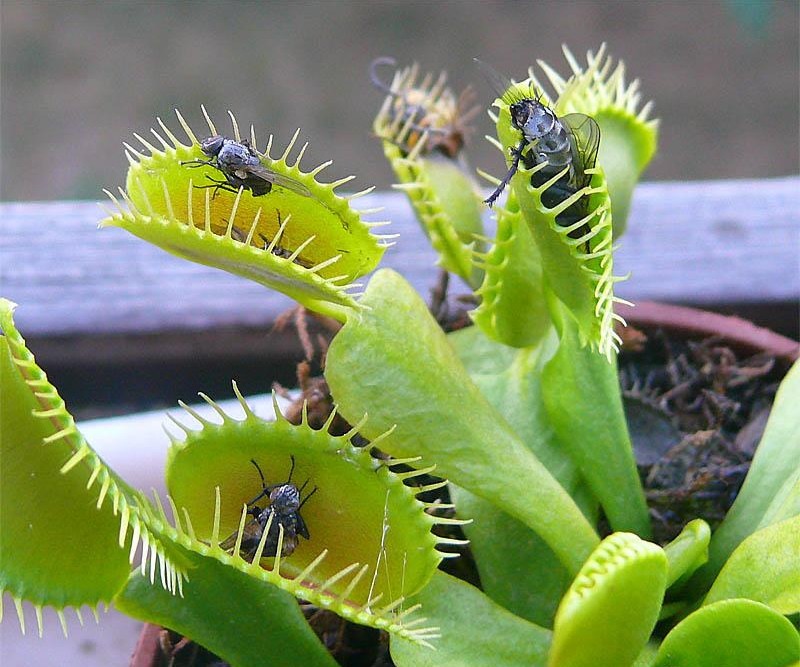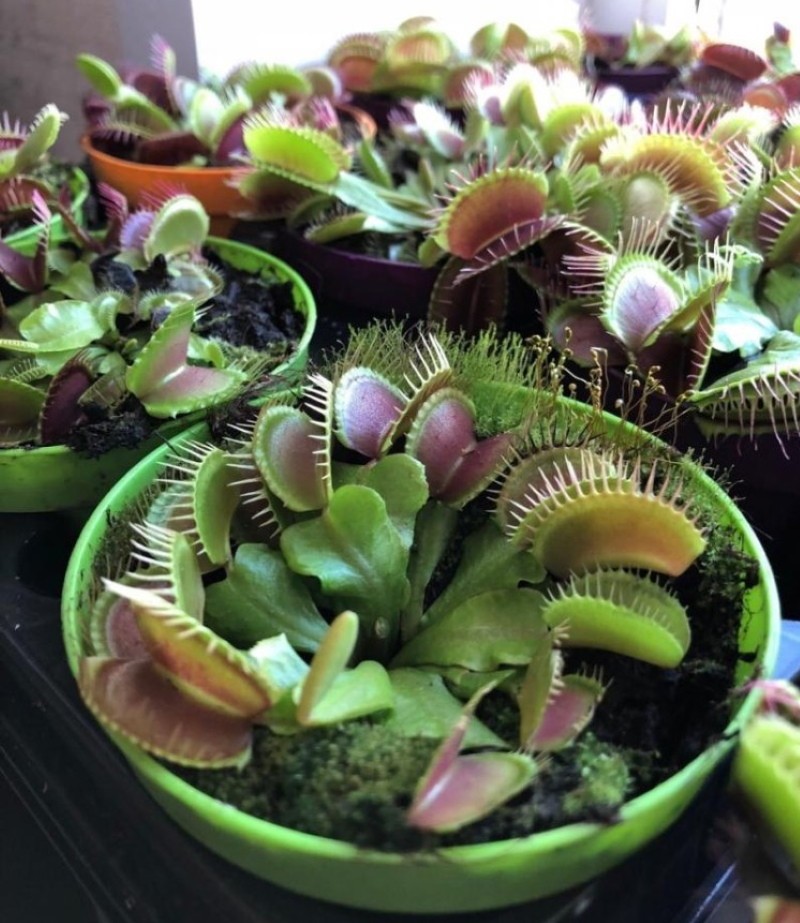Unique carnivorous plant Dionea - home care for the green predator
 Recently, it has become fashionable to grow various exotic plants, among which the most unusual are "predators". One of the cultures that have learned to eat living flesh is Dionea, which is very specific in home care. These Dionei growing in the open field can still provide themselves with food. There are always many different midges and insects in the garden that fall into their traps. Indoor predatory green pet will completely depend on you and without your support it simply will not survive.
Recently, it has become fashionable to grow various exotic plants, among which the most unusual are "predators". One of the cultures that have learned to eat living flesh is Dionea, which is very specific in home care. These Dionei growing in the open field can still provide themselves with food. There are always many different midges and insects in the garden that fall into their traps. Indoor predatory green pet will completely depend on you and without your support it simply will not survive.
Characteristic features of Dionea

Lighting and temperature for keeping a live flycatcher
 In the wild, dionea grows in the fresh air, in warmth, and photosynthesis is carried out thanks to good lighting. You should create a similar microclimate for her at home. Place the flycatcher on the east window, you can also on the south one, but protect it from direct rays.
In the wild, dionea grows in the fresh air, in warmth, and photosynthesis is carried out thanks to good lighting. You should create a similar microclimate for her at home. Place the flycatcher on the east window, you can also on the south one, but protect it from direct rays.
If the traps become faded, and the leaves become thin, Dionea signals you that there is a lack of light.
Fresh air is also important for the lover of freedom, but exclude drafts. But the plant tolerates heat well, but on condition that the humidity of the air will be increased. The Venus flytrap is generally very fond of moisture and quickly dies without it.
Despite its thermophilic character, Dionea needs a cool winter. In December, take the pot out to a room with a temperature of no more than 10 ° C heat and leave it there for 3 months. During this time, the bush will rest. Dionea can also live without a rest period. But her age will not be long and after 1.5-2 years the bush will disappear.
Dionea - home care for a "live" flower
 Soil is also important. Rather, the flycatcher does not need soil as such, it does not take food from there. But it receives life-giving moisture. In addition, he loves high acidity.
Soil is also important. Rather, the flycatcher does not need soil as such, it does not take food from there. But it receives life-giving moisture. In addition, he loves high acidity.
For planting predators do not use nutritious soil mixtures - they are too oily for her. A plant in such a land will die. Plant the dionea in a mixture of high moor peat and quartz sand. It will hold moisture well and will provide the desired level of acidity.
When caring for a carnivorous plant, follow these important rules:
- Water only in the pan, and there should be water in it at all times. The bush will take as much as needed, but do not forget to change the water.
- Spray frequently during hot periods.
- Transplant no more than once every 2 years, choosing narrow bowls.
Separately, it is worth highlighting the diet. It is rarely necessary to feed the Dionea, but it is necessary only with live insects. They must be large enough to fit completely into the trap and it snapped shut tightly. Flies, spiders, bugs (but only without a hard shell), slugs, ants will do. It is enough to feed only twice a month, while laying food in only two traps at a time. In the next feeding, other traps receive food. In winter, during the dormant period, you do not need to feed. Dionea does not need other types of feeding at all.
The predator reproduces by baby bulbs, cuttings and seeds.